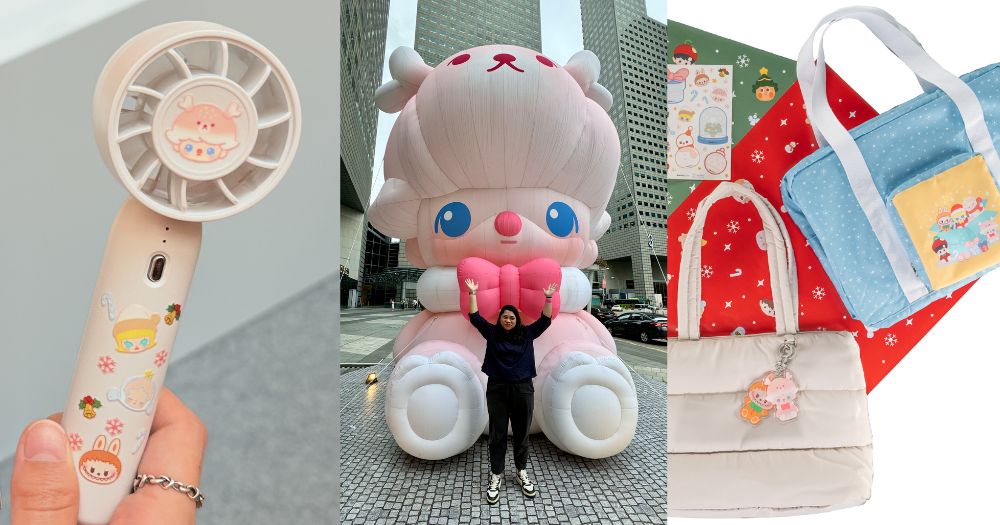Child entering P1? Primary school principal shares what parents should & shouldn’t do for a smooth transition.
Navigating this milestone in your child's educational journey requires a careful balancing act.

By Sharon Siew
“I want to protect my child and keep them safe! Yes … but isn’t it also important for my child to face challenges, fall or fail, and learn?”
In the journey of growing your child, it is hardly surprising for you to experience tension and be caught between the polarities of protecting your child and letting them encounter challenges in life.
Striking a balance between the two extremes lets you create an environment where your child feels safe to take risks, try, and learn from mistakes.
It also empowers you to foster a loving and trusting relationship while helping your child develop the skills to learn and grow.
This balancing act is especially important at the huge milestone of helping your child transit smoothly from pre-school to primary school.
“What is a smooth transition?”, you may ask.
A smooth transition occurs when your child feels safe and comfortable in their new environment, can manage daily challenges, and knows how to reach out to teachers and peers for help when needed.
What can parents do to support a smooth transition? What should parents refrain from doing?
Teach your child to be independent
Encourage your child to try things on their own, such as tying their shoelaces, picking out clothes, packing their school items and preparing a simple snack.
This helps your child to foster confidence and self-reliance.
While it may be tempting to step in to speed things up, resist the urge. Allowing your child the time and space to explore their abilities is crucial for their development.
For instance, if your child struggles to button the school shirt, offer gentle encouragement and show the steps instead of taking over.
Refrain from saying things like, “Why can’t you do a simple thing like this!” which may demoralise your child in the long run.
Over time, mastering these small things in a positive environment generates feel-good emotions and engenders a sense of accomplishment, which builds your child stronger for future challenges.
At the same time, assure your child that the school is a safe learning space. In cases where they require help, they can approach the trusted adults in the school (e.g. teachers, school counsellors) for assistance.
Guide your child to develop social-emotional skills
Guide your child to grow with courtesy and respect as they interact socially within the family, school, and community.
Good manners like greeting “good morning”, and saying "please" and "thank you", along with treating everyone with graciousness and kindness are basic seeds that can sprout into great social skills.
These seeds are planted at home. You act as a mirror for your child, reflecting how to treat others from family members to the food-court uncles and aunties.
Your child will soak up your behaviours like a sponge.
Besides modelling, you can practise expressing gratitude at home with your child. For example, try starting family dinners with a round of compliments for one another.
Help your child to understand what courtesy and respect looks like in the classroom. This can look like taking turns with their classmates and accepting each other’s differences.
Connect your child to what this means by practising at home.
Encourage your child to play games where they have to wait for their turn, like a round of Snakes & Ladders or Uno.
Remind your child to share with others. This teaches patience and emphasises the joy of caring and sharing.
Have conversations with your child to discuss differences. You could ask your child about classmates who have a different interest or hobby; express awe and wonderment with your child at these differences; encourage your child to pose curious questions respectfully to the classmates to find out more.
Engage your child in discussions about feelings too. A safe space would be after reading a story together. You could ask questions such as, “How do you think the (main character of the book) felt when (an obstacle was encountered)? What would you do if you were the (main character)?”
Such chats can help your child to learn to be considerate and compassionate.
You would be nurturing empathy and emotional intelligence in your child, which they can carry into their friendships as well as their adventures in life!
Instil a positive attitude towards learning in your child
Teach your child the 3Ps — Perspiration (i.e., hard work and effort), Patience, and Perseverance — that foster a positive attitude towards learning.
Emphasise constantly that effort and hard work are important. Encourage them to tackle challenges with determination, whether they are learning a new concept, picking up a new skill, or working on a puzzle.
When they struggle, remind them that persistence is key: “Remember how long it took you to ride your bicycle? You kept trying and now you’re great at it!”
Reinforcing the idea that perseverance leads to growth fosters resilience in your child. You could even share stories from your own life where hard work paid off!
Facilitating a strong school-home partnership
“Ok! I can do all these! But what is happening in school? What if my child can’t cope well? Will the teachers be patient with my child?”
Fret not! The teachers can provide customised support for children at different levels of readiness. There will be comprehensive start-right, start-strong induction activities to familiarise the children with their new environment, new routines, and new friends; and to build executive functions and self-regulation skills.
Importantly, the school will share with parents the routines being implemented and the growth-focused language that we use with our students.
As part of the school-home partnership, you could work with the teachers by checking in with your child on the learning experiences in school, reinforcing the routines and instructions, and creating a conducive environment at home for reading and homework.
When interacting with your child, be consistent in promoting independence, courtesy and respect, and a positive attitude towards learning.
Focus on the longer-term journey of learning and development
What is essential in the transition from pre-school to Primary One (P1) is for parents to focus on our children’s holistic development and prioritising the development of their social-emotional competencies, instead of over-preparing academically.
Let us try to avoid overwhelming our children by excessively prioritising academic preparation. Doing so before they enter P1 may deprive your child of the joy of learning new things together with classmates in school.
Without the anticipation and excitement of discovery in the classroom, learning may become a bore and a chore to your child.
Borrowing a page from the MOE Kindergarten playbook, a strong start for your child means staying curious, listening attentively, participating actively, cooperating with others, and nurturing self-confidence.
You are your child’s first teacher. So, inspire your child to enjoy their journey in life and flourish as a happy, kind, and confident person!
Sharon Siew is the principal of Jing Shan Primary School.
Top image: Canva
MORE STORIES


















